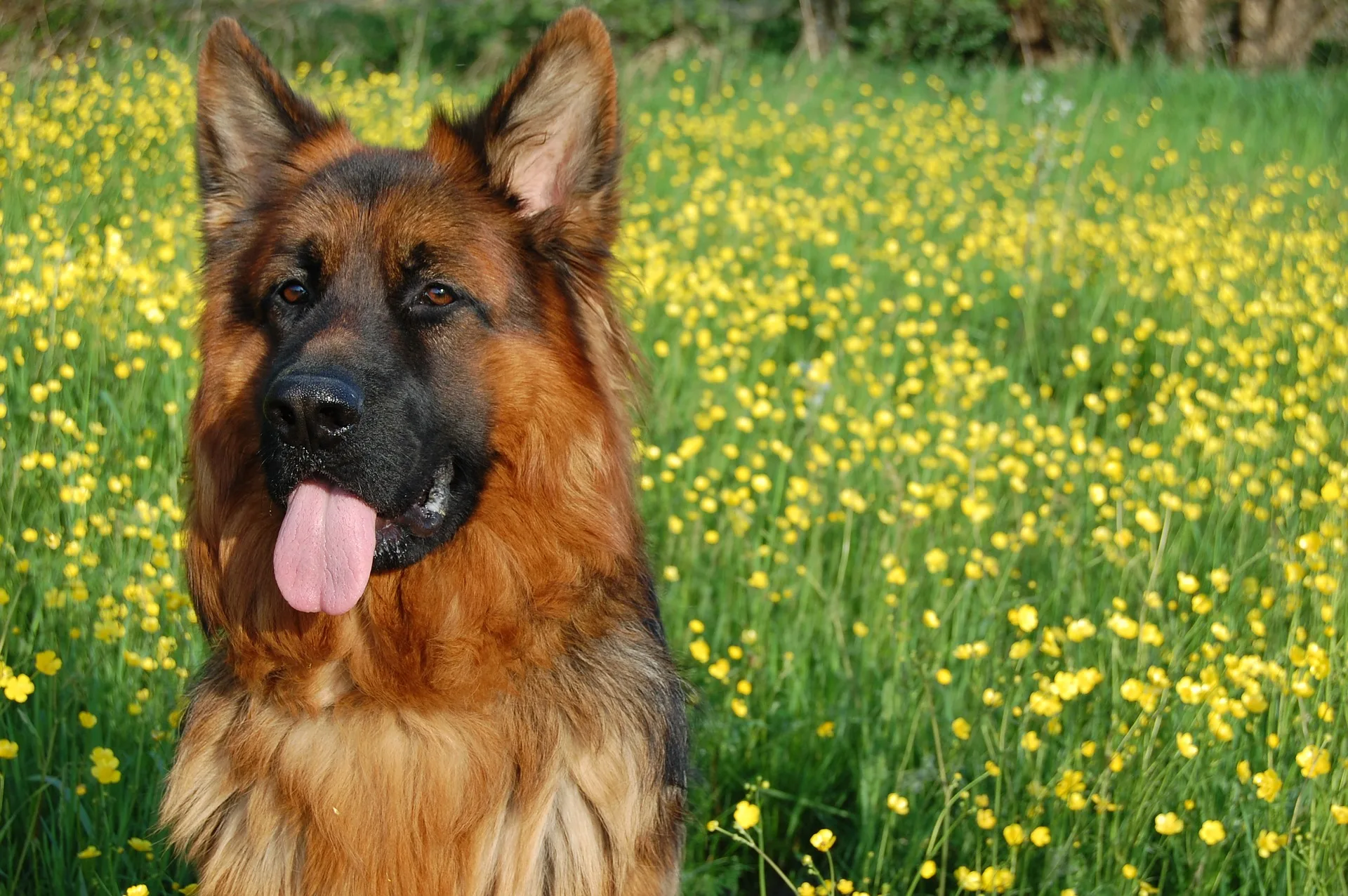German Shepherds are one of the most well known dog breeds out there. I’m pretty certain that almost everyone reading this article has seen a GSD in real life. And while most of these dogs have a black and tan coat, there are also some other color variations out there. One of them is the red German Shepherd. These rare and stunningly beautiful dogs steal the attention wherever they go.
But their unique look comes at a certain price. If your interested in buying a red German Shepherd, know that you will have to pay a bit extra. Red German Shepherd puppies cost between $500-$2000. Their beautiful coats are a rich mahogany color combined with a deep black. That’s why they are also often called the black and red German Shepherd. But we will talk about that more a bit later.
And in case you were wondering — yes, the red German Shepherd is 100% purebred. But much more important than that, these gorgeous redheads also have the personality of a classic German Shepherd. That means that they are protective, well mannered and if you give them the chance — the best friend you’ll ever have.
So let’s learn a bit more about the red German Shepherd together, shall we?
What Is a Red German Shepherd Puppy?
The red German Shepherd is in no way a separate dog breed. Instead, it’s just a rare color variation of the classic GSD. Unlike the white GSD, this color variation is fully recognized by the American Kennel Club (AKC). That basically means that your beloved puppy can become a part of various breed shows or competitions.
The red German Shepherd is also often called the black and red GSD. They often have a black “mask” over their face as well as a black “saddle” over their back. Their remaining coat is a brown-red/rusty color. They are typically show dogs because of their bloodline.
Other color variations of the German Shepherd dog:
- Blue German Shepherd: Basic Breed Info
- Panda German Shepherd: Breed Guide
- White German Shepherd Puppies
- Liver German Shepherd: What You Should Know
- All Black German Shepherd: Why They Are Special
Origin
The German Shepherd is a young breed. They were created in 1899.
They are so versatile and engaged in so many activities, that it’s easy to they were developed to herd sheep. But, there is one man that stands out in the history of this breed, Captain Max von Stephanitz
Over 35 years, von Stephanitz, along with other breeders, created, improved, refined, and promoted the German Shepherd breed.
The German shepherd is not for first-time owners
Von Stephanitz saw that the herding was declining with the rapid industrialization of Germany. So, he promoted his breed as a K-9 working dog. And the rest is history!
Today German Shepherds are the most popular breed used in armies and police around the globe.
In 1906 the first dogs were exported to the USA. The American Kennel Club (AKC) recognized this breed in 1908.
Basic info
The German Shepherd is a confident and clever dog who is loyal and affectionate to his family. He impresses with a high willingness to work and has a pronounced “will-to-please”. The breed is also very fond of children and also well tolerated with other pets. The dog behaves rather neutrally towards strangers, but intervenes if he sees them as a threat.
The character of the shepherd dog also varies depending on the purpose for which he was bred. The specimens from performance breeding have a pronounced protective and prey drive as well as a fairly low stimulus threshold.
Appearance
The red German Shepherd is a medium-sized dog. Males stand between 24 and 26 inches, while females stand between 22 and 24 inches. The average weight of a German Shepherd is between 75 and 95 pounds.
German Shepherds have a medium-length double coat that acts as insulation and protects them from the elements.
The red German Shepherd is, just like the name suggests — red. But there is a bunch of other color variations too. Like liver, white, sable, black and silver…
Training
The German Shepherd is eager to participate in every form of activity. He is very confident and training is therefore not particularly difficult, but absolutely necessary.
In order to promote his balanced nature, you should train the dog from the beginning with a lot of empathy and patience. With enough consistency and positive reinforcement, you will quickly achieve success and the dog will become a obedient companion.
When working with the German Shepherd, you should always be focused on the matter so that you can give him clear instructions. If you want to train your German Shepherd as a working dog, get a professional involved.
How much activity does the German Shepherd need?
In general, every type of dog sport is suitable for the German Shepherd. An active sport such as agility is the ideal utilization for the dog’s mental as well as physical fitness. However, you should definitely have your Shepherd x-rayed before going into competitive sports to check him for joint diseases such as hip dysplasia. Even with a healthy dog, you should not exaggerate the physically stressful tasks, especially in puppy age.
Health and care
The grooming of the short-haired German shepherd dog is not particularly complex. However, long-haired specimens should be brushed regularly and cleaned of leaves, branches and other dirt after each walk. When feeding, the breed can be a little sensitive. They cannot tolerate rapid changes in diet very well and often struggle with digestive problems. However, consistent feeding with healthy pet food can positively influence digestion. An incorrect diet can also have a negative effect on the health of the dog’s bones and joints. Since the German Shepherd tends more to hip dysplasia due to his breeding with a sloping back, it is important not to strain him too much at a young age.

